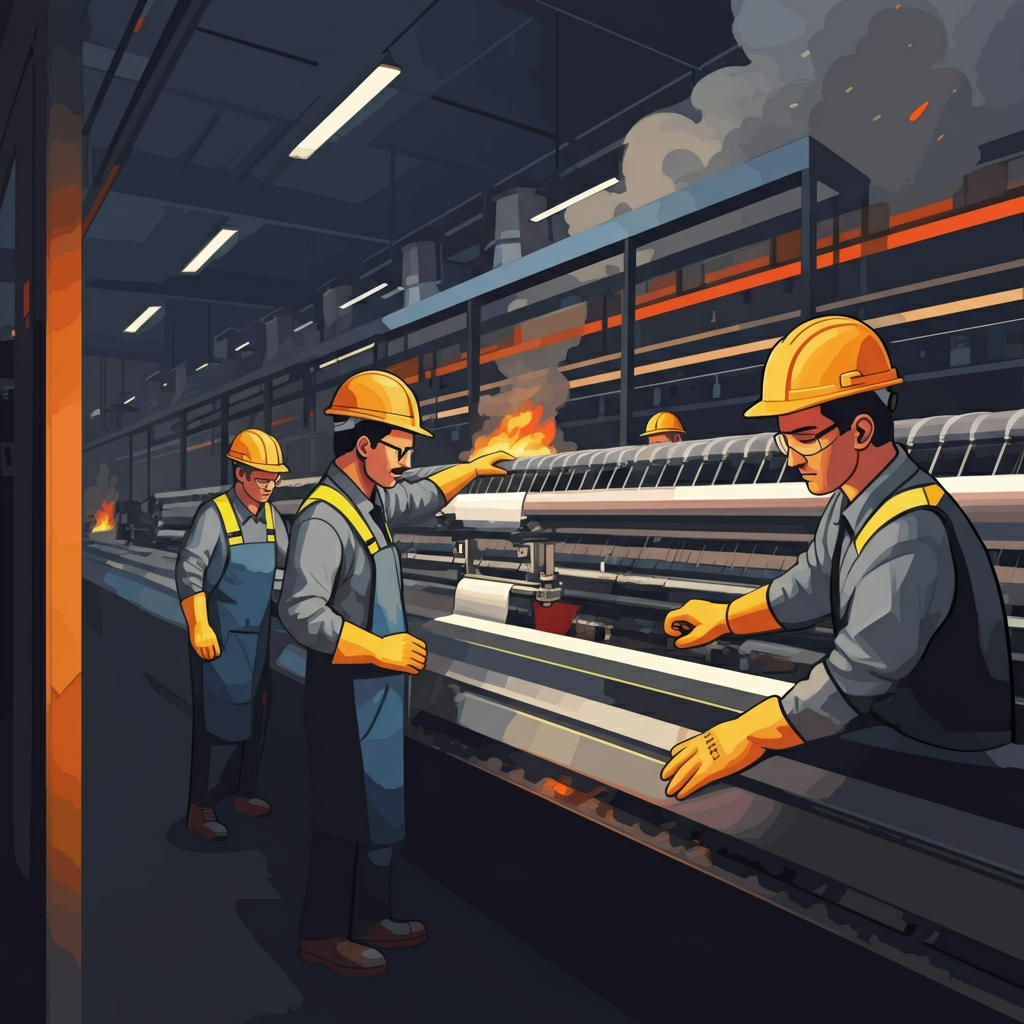The textile industry is a cornerstone of manufacturing, but it is not without its risks. The processes involved, from handling raw materials to finishing fabrics, often involve flammable materials, high-speed machinery, and chemical treatments. This makes industrial safety not just a regulatory requirement, but a fundamental necessity for protecting workers and ensuring operational continuity. Recent fire incidents in the industrial hub of Bharuch, India, have brought this issue into sharp focus, offering critical lessons for the entire sector.
A Pattern of Incidents in Bharuch
Bharuch has long been a major center for chemical and textile production. Unfortunately, this has also made it the site of several industrial accidents. Recent fires at major facilities, including those operated by Century Enka and Birla, serve as stark reminders of the inherent dangers.
These incidents, while distinct, share common threads. They often originate from factors like electrical short circuits, mechanical failures leading to sparks, or the improper storage and handling of combustible materials. The textile environment, filled with lint, dust, and chemical vapors, can turn a small spark into a major blaze in moments. The rapid escalation of these fires highlights potential gaps in safety protocols, emergency response capabilities, and ongoing risk assessment.
Unpacking the Causes and Learning the Lessons
Analyzing these events reveals several root causes that extend beyond a single point of failure. Understanding them is the first step toward building a safer future.
- Inadequate Risk Assessment: Fires often happen because potential hazards were either overlooked or underestimated. In a textile plant, this could mean failing to recognize the fire risk posed by accumulated cotton dust in ventilation systems or not properly isolating hot work like welding from flammable storage areas. The lesson is clear: risk assessments must be thorough, frequent, and dynamic, adapting to any change in process or materials.
- Maintenance and Housekeeping Lapses: Machinery that is not properly maintained can overheat or generate sparks. Similarly, poor housekeeping allows flammable dust and waste to accumulate, providing fuel for a fire. Regular, documented maintenance schedules and rigorous cleaning routines are non-negotiable aspects of fire prevention.
- Insufficient Training: A well-defined safety plan is only effective if every employee understands their role. This includes knowing how to operate equipment safely, how to handle chemicals correctly, and what to do in the first moments of an emergency. The incidents underscore the need for continuous, practical training for all staff, from machine operators to management.
- Gaps in Emergency Response: The time it takes to detect a fire and initiate a response is critical. Failures in alarm systems, inaccessible fire extinguishers, or an unclear evacuation plan can have devastating consequences. The lesson learned is that emergency systems must be tested regularly, and every worker must be confident in the emergency procedures.
Preventive Measures: Building a Culture of Safety
Preventing future incidents requires a multi-layered approach that combines engineering controls, administrative policies, and a strong safety culture.
- Engineering Controls: The first line of defense is designing safety into the plant itself. This includes installing modern fire detection and suppression systems (like sprinklers and gas-based systems), ensuring proper ventilation to control dust and vapors, and using intrinsically safe electrical equipment in high-risk zones.
- Safe Work Practices: Administrative controls are crucial. This involves implementing strict protocols for “hot work,” ensuring proper grounding and bonding to prevent static electricity, and enforcing safe chemical storage and handling procedures. A robust lock-out/tag-out system for machinery maintenance is also essential.
- Comprehensive Training Programs: Go beyond basic fire drills. Training should cover specific hazards related to each job role, proper use of personal protective equipment (PPE), and first-aid response. Empowering employees to identify and report hazards without fear of reprisal is key to proactive safety.
- Regular Audits and Inspections: Internal and third-party safety audits should be conducted regularly to identify potential weaknesses in the safety management system. These audits should check for compliance with legal standards and company policies, ensuring that safety measures are being implemented effectively on the plant floor.
The Future Outlook: Policy and Technology
Looking ahead, the path to improved industrial safety in the textile sector will be shaped by stronger policy enforcement and the adoption of new technologies. Regulators have a vital role to play in ensuring that safety standards are not just written down but actively enforced through rigorous inspections and meaningful penalties for non-compliance.
Technology also offers powerful new tools. The Internet of Things (IoT) allows for real-time monitoring of equipment temperature and environmental conditions, providing early warnings of potential hazards. Advanced analytics can predict maintenance needs before a failure occurs. Drones can be used for inspecting hard-to-reach areas, and virtual reality (VR) can provide immersive and safe training for emergency scenarios.
Ultimately, the incidents in Bharuch are a call to action. They remind us that industrial safety is an ongoing commitment, not a one-time achievement. By learning from these events and embracing a proactive culture of prevention, the textile industry can better protect its most valuable asset—its people—and build a more resilient and sustainable future.
Frequently Asked Questions (FAQ)
What are the most common causes of fires in textile plants?
Fires in textile plants often start from electrical short circuits, sparks from machinery, improper handling of flammable chemicals, and the accumulation of combustible dust and lint. Hot work, such as welding, without proper precautions is another significant risk factor.
What key preventive measures can be taken to avoid fires?
Key measures include regular machinery maintenance, rigorous housekeeping to control dust, proper storage of flammable materials, and implementing strict "hot work" permit systems. Installing modern fire detection and suppression systems is also essential
Why is employee training so important for fire safety?
Effective training ensures every employee knows how to operate equipment safely, handle hazardous materials correctly, and respond quickly in an emergency. It empowers them to identify and report potential fire hazards, creating a proactive safety culture.
How can technology help improve safety in textile plants?
Technology like IoT sensors can monitor equipment temperature and air quality in real-time, providing early warnings. Advanced analytics can predict maintenance needs before failures occur, and virtual reality (VR) can offer immersive, safe training for emergency response.
What lessons can be learned from the fire incidents in Bharuch?
The incidents highlight the need for comprehensive risk assessments, diligent maintenance, and continuous employee training. They show that a multi-layered safety approach, combining engineering controls with robust safety policies, is critical to preventing major accidents.



